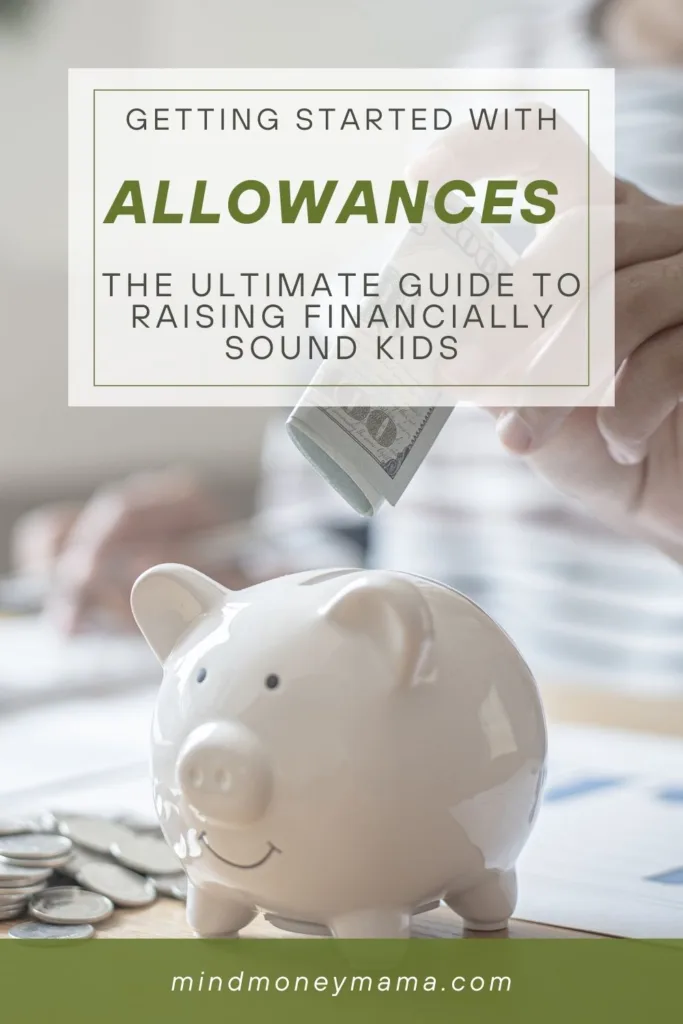Remember the joy of that Saturday morning allowance burning a hole in your pocket? Turns out, that wasn’t just about candy and comics – it was the first step on your financial journey! Now, it’s your turn to pass the torch (and maybe avoid the sugar crash) by giving your own little adventurers a taste of financial autonomy. But before you hand over the treasure map, let’s navigate the exciting (and sometimes messy) world of allowance systems.

Age-Appropriate Adventures: Choosing the Right Allowance Map
Every adventurer needs a starting point, and so does your young financial explorer. Here’s a breakdown of allowance systems to match different age groups:
[RELATED] How to Teach Kids about Money
Tiny Treasure Hunters (4-6 years old):
- System: Stipend: Provide a small, regular amount (think pocket change) not tied to chores.
- Why it works: Introduces the concept of money and how it works in the real world. Fosters independence and decision-making skills. Introduce the concept of saving and spending. At this stage, you can teach them how to make goals, save, and spend. If there’s something they want but don’t have enough money to buy, you can explain that they can save money in a piggy bank or something else fun until they have enough.
- Tip: Use colorful coins or a cute piggy bank to make saving fun!
Junior Jedi Knights (7-10 years old):
- System: Chore Chart: Link allowance to specific tasks, building responsibility and teaching the value of work.
- Why it works: Connects effort with reward, instilling a sense of accomplishment. Helps understand budgeting and prioritizing spending. Having your kids learn the value of work is so important to raising financially sound adults. By having to work for money or rewards, they will have a better understanding of what to prioritize. When I was a kid and had to start paying for things out of my “own money” I was much more selective and rarely made impulse purchases.
- Tip: Make the chart engaging with stickers or fun illustrations. Let them choose some chores!
Teen Titans Rising (11-14 years old):
- System: Variable Allowance: Adjust allowance based on age, responsibility level, and agreed-upon expenses (like phone bills).
- Why it works: Promotes financial planning and decision-making for real-world scenarios. Teaches budgeting and negotiation skills.
- Tip: Discuss bills and expenses openly. Encourage them to research financial products like savings accounts.
Financial Avengers Assemble (15+ years old):
- System: Real-World Experience: Involve teens in managing family finances (e.g., grocery shopping, bill payments). Consider a “job shadowing” experience. You can also set them up with a paper trading account so they can learn how to invest in stocks in a risk-free way.
- Why it works: Provides practical money management skills and prepares them for financial independence.
- Tip: Discuss retirement plans, investments, and responsible credit use. Encourage entrepreneurship or freelance projects.

Charting the Course: Types of Allowance Systems
Variety is the spice of life, even when it comes to allowances! Here are some additional systems to consider:
- Matching Funds: Match their savings efforts to encourage responsible saving habits. One way to do this is to match a teens earnings with a ROTH IRA contribution. As long as they have earned income, you can contribute on their behalf. That way, they have their own spending money and sense of accomplishment, but as parents, we can help jumpstart their retirement while their earnings are most likely low.
- Pay-For-Performance: Offer bonus rewards for exceeding expectations or going above and beyond. #Tipflation, anyone? You can tie this to good grades or for helping out around the house or with younger children. I remember cashing in report cards for Chuck E. Cheese tokens back in the day. It was a core childhood memory that encouraged me to study hard and make good grades.
- Financial Games: Introduce fun games like Monopoly or budgeting apps to teach financial concepts. You can work these into a family game night and even simulate making purchases with imaginative play for little ones.
Remember, the “best” system is the one that fits your family’s values and your child’s personality. Experiment, tweak, and adjust as they grow. The important thing is to make it a positive learning experience with open communication and guidance.
Treasure Chests of Wisdom: Tips for Smooth Sailing
- Set clear expectations: Discuss the purpose of the allowance, spending limits, and saving goals.
- Be consistent: Stick to the chosen system and avoid impulse rewards or punishments.
- Embrace mistakes: Let them learn from budgeting mishaps. Use them as teaching moments.
- Lead by example: Demonstrate responsible financial decisions in your own life.
- Celebrate their wins: Applaud their saving successes and responsible spending choices.
Most importantly, keep it fun! Turn money management into a treasure hunt for financial knowledge and life skills. Remember, you’re not just handing over an allowance, you’re equipping your little explorers with the tools to navigate the exciting (and sometimes unpredictable) world of finance. So, bon voyage, young adventurers! Go forth and conquer your financial goals!
Have you introduced allowances to your kids?


